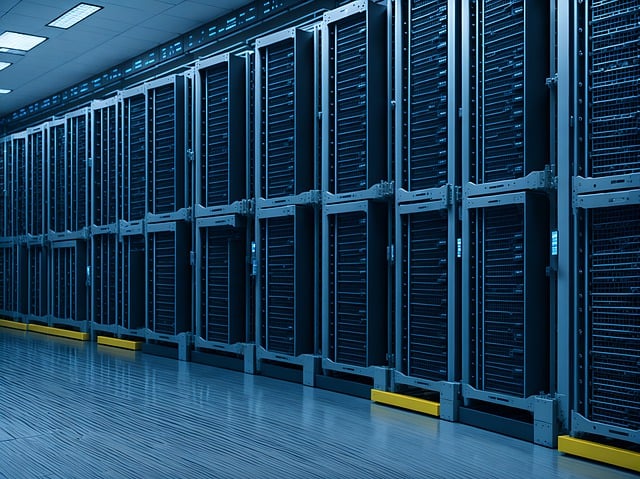How AI Workloads Are Transforming Enterprise Networks?

Strong 8k brings an ultra-HD IPTV experience to your living room and your pocket.
As enterprises embrace artificial intelligence (AI), the explosive growth of AI applications is reshaping enterprise networks at an unprecedented scale. From data centers and cloud infrastructure to the edge and beyond, traditional network architectures are being pushed to their limits in terms of bandwidth, latency, security, and adaptability.
In this article, HOSTNOC will shed light on how increasing AI workloads is transforming enterprise networks.
The AI Data Surge
AI traffic is growing exponentially. According to Omdia, all AI traffic — which includes net new AI applications and AI-enhanced applications — accounted for 39 exabytes of total network traffic in 2024. That figure is expected to double to 79 exabytes in 2025, and by 2031, AI traffic is predicted to surpass conventional application traffic altogether.
Enterprise AI activity has surged as well. A report from Zscaler revealed a 3,464% increase in enterprise AI usage over the previous year, with over 3,600 terabytes of data transferred across more than 800 AI applications — including popular tools like ChatGPT.
This explosion in AI-driven data has made it clear: enterprise networks need to evolve fast to accommodate the rising demands of AI workloads.
AI in the Data Center
In data centers, AI creates two major networking challenges: high-volume GPU-to-GPU traffic for model training, and the dynamic inference workloads that follow deployment.
To meet these demands, enterprises are carving out dedicated AI zones within their data centers — dubbed “AI factories” — with specialized networking, security, and traffic handling requirements. These include intelligent traffic steering and the ability to handle high-throughput, low-latency transfers.
As a result, the AI-driven data center Ethernet switch market is booming. IDC projects it will grow from $640 million in 2023 to over $9 billion by 2028. AI is now a major growth engine in enterprise Ethernet networking. The same is true for dedicated server hosting.
Adding complexity is the rise of agentic AI, where multiple AI agents collaborate on complex tasks like generating code or executing workflows. Unlike traditional, deterministic applications, agentic AI generates unpredictable, dynamic traffic flows. This unpredictability means network infrastructure must be more flexible, responsive, and intelligent than ever before.
The Cloud Challenge
Once trained, AI models move into production — shifting data flows beyond the data center and into cloud environments. This shift demands robust wide-area and multi-site connectivity.
“Inference requires strong wide area and multi-site connectivity, which is different from training’s dense local network requirements,” says Jason Carolan, chief innovation officer at Flexential. Because many AI initiatives start as proofs of concept, networks need to accommodate evolving models, datasets, and endpoints.
Many enterprises are already in a good position to adapt, having modernized their networks during the pandemic era. But the complexity of today’s multi-cloud ecosystems — with hyperscalers, specialized GPU providers, data lakes, and private clouds and dedicated WordPress hosting — creates new connectivity challenges. Each cloud provider has its own networking paradigm, and stitching these together is no small feat.
AI at the Edge
Edge AI introduces its own unique challenges. Latency becomes critical for mission-critical use cases like autonomous vehicles, robotic surgery, and smart manufacturing.
By processing data closer to its source, edge AI reduces latency and bandwidth consumption. Salesforce EVP Paul Constantinides highlights how low-latency edge networks like CDNs can enable real-time AI use cases such as virtual product try-ons in retail or AI-enhanced surveillance in manufacturing.
Security in the Age of AI
AI's growing presence in enterprise networks also introduces new security risks. Traditional security models face challenges with AI workloads, particularly agentic AI, where software agents may not have defined roles or credentials — or worse, may require full system access.
“How do you handle agent identities and privileges when there are no roles or credentials?” asks Lori MacVittie, chief evangelist at F5 Networks. “You can’t enforce traditional security rules on something that doesn’t fit the mold.”
Zscaler reports that 60% of all enterprise AI transactions are being blocked, with 2.9 million attempts to upload sensitive data — like Social Security numbers and proprietary code — to platforms like ChatGPT. Many companies have implemented strict data loss prevention (DLP) policies to mitigate these risks.
Meanwhile, AI itself is being used to both defend and attack. Hackers are leveraging AI for everything from password cracking to phishing. A report by Keeper Security found that 51% of IT leaders now see AI-powered attacks as their top security concern. Fortunately, the cybersecurity industry is responding in kind, with all major vendors investing in AI-driven security tools.
A New Era of Network Design
The proliferation of AI is transforming enterprise networks in fundamental ways:
Network Architecture:
AI is driving a shift from static, inflexible networks to dynamic, intelligent infrastructure that can adapt to new workloads.
Bandwidth & Latency:
AI workloads, especially multi-modal ones like large language models and video processing, demand far greater bandwidth and lower latency.
Traffic Patterns:
Conversational interfaces and agentic AI change traditional traffic patterns, requiring more advanced traffic management and visibility tools.
Security Posture:
Enterprises must rethink identity, access control, and DLP in the context of autonomous AI agents and unpredictable data flows.
Conclusion
As AI becomes ubiquitous, every website or application could soon have its own AI interface — fundamentally altering how traffic flows across networks. Enterprises that proactively modernize their networks will be better prepared to harness the full potential of AI while minimizing risk.
Did this article help you in understanding how AI workloads are impacting the enterprise networks? Share your thoughts with us in the comments section below.
Note: IndiBlogHub features both user-submitted and editorial content. We do not verify third-party contributions. Read our Disclaimer and Privacy Policyfor details.


